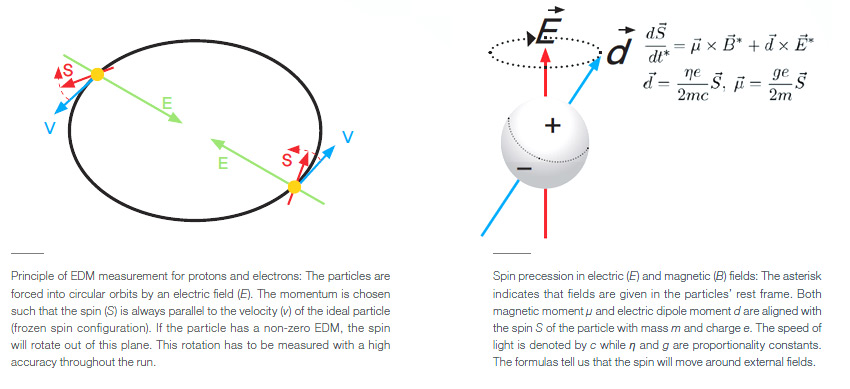주메뉴
- About IBS 연구원소개
-
Research Centers
연구단소개
- Research Outcomes
- Mathematics
- Physics
- Center for Underground Physics
- Center for Theoretical Physics of the Universe (Particle Theory and Cosmology Group)
- Center for Theoretical Physics of the Universe (Cosmology, Gravity and Astroparticle Physics Group)
- Dark Matter Axion Group
- Center for Artificial Low Dimensional Electronic Systems
- Center for Theoretical Physics of Complex Systems
- Center for Quantum Nanoscience
- Center for Exotic Nuclear Studies
- Center for Van der Waals Quantum Solids
- Center for Relativistic Laser Science
- Chemistry
- Life Sciences
- Earth Science
- Interdisciplinary
- Center for Neuroscience Imaging Research (Neuro Technology Group)
- Center for Neuroscience Imaging Research (Cognitive and Computational Neuroscience Group)
- Center for Algorithmic and Robotized Synthesis
- Center for Genome Engineering
- Center for Nanomedicine
- Center for Biomolecular and Cellular Structure
- Center for 2D Quantum Heterostructures
- Center for Quantum Conversion Research
- Institutes
- Korea Virus Research Institute
- News Center 뉴스 센터
- Career 인재초빙
- Living in Korea IBS School-UST
- IBS School 윤리경영


주메뉴
- About IBS
-
Research Centers
- Research Outcomes
- Mathematics
- Physics
- Center for Underground Physics
- Center for Theoretical Physics of the Universe (Particle Theory and Cosmology Group)
- Center for Theoretical Physics of the Universe (Cosmology, Gravity and Astroparticle Physics Group)
- Dark Matter Axion Group
- Center for Artificial Low Dimensional Electronic Systems
- Center for Theoretical Physics of Complex Systems
- Center for Quantum Nanoscience
- Center for Exotic Nuclear Studies
- Center for Van der Waals Quantum Solids
- Center for Relativistic Laser Science
- Chemistry
- Life Sciences
- Earth Science
- Interdisciplinary
- Center for Neuroscience Imaging Research (Neuro Technology Group)
- Center for Neuroscience Imaging Research (Cognitive and Computational Neuroscience Group)
- Center for Algorithmic and Robotized Synthesis
- Center for Genome Engineering
- Center for Nanomedicine
- Center for Biomolecular and Cellular Structure
- Center for 2D Quantum Heterostructures
- Center for Quantum Conversion Research
- Institutes
- Korea Virus Research Institute
- News Center
- Career
- Living in Korea
- IBS School
News Center
|
Advances in Precision Spin Tracking Center for Axion and Precision Physics Research
One of today’s biggest mysteries in physics is the observed matterantimatter asymmetry in the Universe. The creation of such an asymmetry from a symmetric initial state (Big Bang) requires charge-parity (CP) symmetry violating particle interactions that lead to the creation of more particles than antiparticles over time. The Standard Model (SM) of particle physics allows for such interactions, but by no means to a degree sufficient to explain the existence of our world: the disparity amounts to a factor of more than 100,000,000! Consequently, physicists believe that only a new fundamental theory, encompassing the SM as limiting case, can explain our observations. Electric dipole moments (EDMs) of elementary particles violate both time and parity symmetries (T, P), and, if the famous CPT theorem holds, also CP. The SM allows only for very tiny EDMs that are below currently observable limits. However, models for physics beyond the SM provide sources for much larger EDMs. Hence, an observation of a large EDM would show a new source of CP violation, and thus be a proof for the existence of new physics. Measurements of EDMs of different particles would also indicate the source, and help to identify the correct theoretical model. The mass scale that such an experiment can probe is well above the scale that even the most powerful accelerators can currently reach. A group at the Center for Axion and Precision Physics within IBS (CAPP/IBS) (Director Yannis K. Semertzidis) works on developing an experimental method for a proton EDM measurement in an all-electric storage ring. The experimental approach consists of freezing the spin of protons in forward direction, and the expected signal is a rotation of the spin out of the ring plane. However, this rotation is very small, and easily can be masked by various other effectws, e.g. tiny radial magnetic fields. It is thereforer crucial to understand all such effects in detail, and develop methods to overcome possible challenges. Due to the complexity of the problem, only numerical simulations are capable of solving the relevant equations. So far there have been few experiments that required a detailed knowledge of the spin evolution during long storage times, and this is reflected in the low number, and sometimes limited applicability, of the existing spin tracking codes. Hence, CAPP/IBS' effort comprises also of development of a new and fast precision tracking tool. We chose the method of direct numerical integration in order to make as few restricting assumptions as possible. However, the best code would be useless if its correctness cannot be proven. Therefore, together with our American collaborators, we developed a set of straightforward, but very precise analytical benchmarking tests. We showed that our simulation method can very accurately calculate the results. The accuracy was shown to be better than one part per billion in several cases. This is a great success, and gives us confidence that we can also simulate more complicated cases of high precision experiments. These benchmarking tests can also be used to investigate the accuracy of other programs. During a recent meeting, the worldwide spin tracking community pledged to do this with all major programs in order to get a better understanding of which codes can be used for precision experiments.
Above). Phase diagram of synchrotron oscillations generated using a tracking program. Published paper V. Anastassopoulos et al., “A Storage Ring Experiment to Detect a Proton Electric Dipole Moment”, arXiv:1502.04317 (2015) |
| Next | |
|---|---|
| before |
- Content Manager
- Public Relations Team : Yim Ji Yeob 042-878-8173
- Last Update 2023-11-28 14:20














